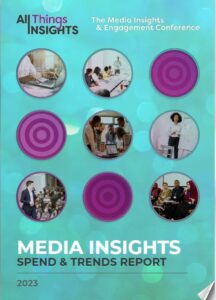Staying Focused on the Market Research Mission
Before getting started, there are a few fundamentals that should be assessed. This includes asking some core questions, such as just what is the objective of the research? Is it going to benefit the business plan? And, how do you plan to utilize this research?
Once you have aligned the market research objectives, it’s time to set research goals. In the blog, “How To Start Your Market Research Mission?” Digital Crew outlines some key steps to take:
- Identify Gaps: If you’re undertaking a particular research program, we’re guessing you’ve identified a certain gap in the market and you’re going to figure out a way to fill in that gap with your solutions.
- Examine The Size of The Market: After you’ve gathered your information from various platforms, you could take your research a step further by identifying various subgroups, or market segments, in that overall market along with each of their unique features and preferences.
- Find The Solution: You’ve gathered your facts and understood the magnitude of the gap in the market. Now, you have to figure out how your solution could evolve into a product with features to fill in this gap.
- Who Are Your Competitors?: Are there competitors out there who are one step ahead of you already solving this so-called problem? If they are, then you’ve got to identify if their customers are unsatisfied somewhere with the service.
- Define Your Buyer Persona: You must understand who your customers are in order to streamline your communication and create your strategy.
- What Is Your Unique Value Proposition?: Your proposition describes why others should use your organization and not the competition.
Identifying Market Research Trends
In All Things Insights’ “Recharging Brand Insights to Strengthen Strategy,” we looked at how brand research can drive insights. Before you start developing and improving your mission statement, it’s time to explore brand strategy and brand insights. Just how well do you know your brand, its mission and how it aligns with the target audience? Brand insights encompasses a variety of metrics, such as brand awareness, brand perception, brand trust, and its value proposition, among other factors. Ultimately, supercharging your brand insights can be a significant initiative that can be leveraged to improve the customer experience, increase satisfaction and loyalty. With an emphasis on insights, it can also help you examine and assess your brand’s health, stand out from the competition and better prepare for the future.
In “Taking a Solutions Approach to Market Research Trends,” we explored some of the broader market research trends hitting the market. Market research trends shift over the course of time, whether it be key takeaways from this year or the evolution of techniques over the decades. An essential element of any business strategy, market research is knowledge that can help influence the business and make an impact regarding revenue, branding strategy, consumer behavior, marketing shifts and more. Certainly, much has changed within the market research industry (think developments in artificial intelligence) while some techniques have remained very much the same (think audience questionnaires and surveys).
Creating A Unified Mission Statement
Developing a market research mission statement can benefit a company in several ways. While mission statements are specific to each company’s needs, we asked ChatGPT to identify some of the top advantages:
- Clarifying Purpose and Goals: A mission statement articulates the purpose and objectives of the market research function within the company. It provides clarity on the role of market research in supporting broader organizational goals, such as understanding customer needs, identifying market opportunities, or informing strategic decision-making. By defining its mission, the market research team can align its efforts with the overall direction of the company, ensuring that research initiatives are focused and impactful.
- Guiding Decision-Making: A well-crafted mission statement serves as a guiding principle for decision-making within the market research function. It helps prioritize research activities, allocate resources effectively, and evaluate the relevance of research projects against strategic objectives. By referencing the mission statement, researchers can ensure that their work aligns with the company’s overarching goals and contributes meaningfully to business success.
- Building Consensus and Alignment: A market research mission statement fosters consensus and alignment among stakeholders within the company. By clearly communicating the purpose and value of market research, it helps garner support from senior management, department heads, and other key decision-makers. This alignment ensures that market research is integrated into organizational processes and decision-making frameworks, leading to more informed and strategic outcomes.
- Inspiring and Motivating Employees: A compelling mission statement can inspire and motivate employees within the market research team. It provides a sense of purpose and direction, fostering a shared commitment to achieving common goals. By understanding how their work contributes to the broader mission of the company, researchers are more engaged, innovative, and driven to deliver high-quality insights that drive business success.
- Differentiating the Company: A market research mission statement can also serve as a tool for differentiation in the marketplace. By articulating a commitment to customer-centricity, data-driven decision-making, or innovation, companies can position themselves as leaders in market research and insights. This differentiation can be particularly valuable in competitive industries where understanding consumer preferences and market dynamics is critical to success.
Shaping the Insights Culture
Overall, developing a market research mission statement can benefit the company by providing clarity, guiding decision-making, fostering alignment, inspiring employees, and differentiating the organization in the marketplace. It serves as a foundational element that shapes the insights culture, strategy, and success of the market research function within the company.
The success of the market research function can also help support the overall company in a range of ways. Ultimately, market research mission statements could uncover new possibilities of problem-solving, new target groups and eventually newer channels of communication. Setting the tone with a powerful and effective market research mission can keep the team on track, inspire the company to new heights, and bring leadership satisfaction to a higher level.
Video courtesy of HubSpot Marketing
Contributor
-

Matthew Kramer is the Digital Editor for All Things Insights & All Things Innovation. He has over 20 years of experience working in publishing and media companies, on a variety of business-to-business publications, websites and trade shows.
View all posts

























































































































